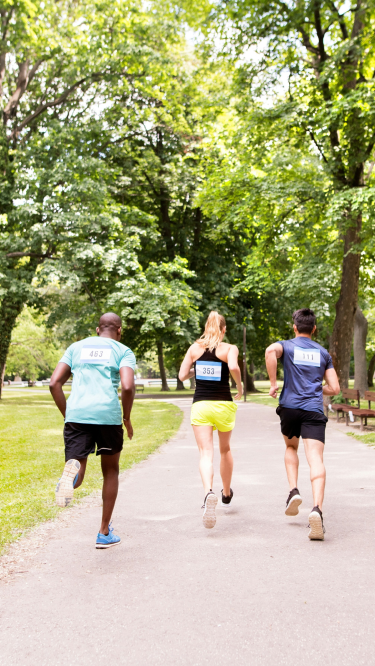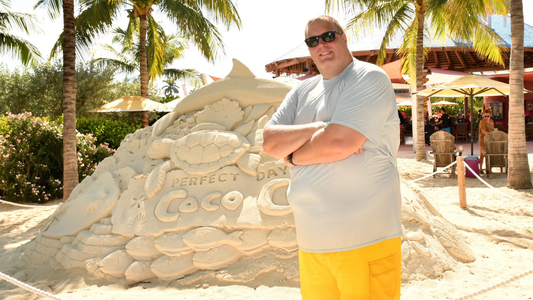

Tips for Creating a Marathon Training Schedule
Training for a marathon is no small feat. In fact, marathons are considered one of the most difficult physical events to participate in, regardless of your athletic experience level. When preparing for your 26.2 mile race, there are many things you want to keep in mind. These tips for creating a marathon training schedule will help you find success and cross the finish line on race day.
Set a Goal
Your marathon goal will be the major driver of your marathon training schedule. Goals set the tone for your training and determine what you want to focus on.
Everyone approaches their marathon goals differently. Some people just want to cross the finish line at the end of the race and be able to say they did it. Others may have a time goal or be looking to qualify for the Boston Marathon.
Your goal will help determine what kind of training sessions you have and how often you will be running. A first time marathoner who just wants to cross the finish line could complete the race only running four days per week. Someone who wants to PR and qualify for the Boston Marathon may need to run 5-6 days per week to reach their training goals.
Just ensure you have a race day goal. This will help you build a successful training schedule.
Start Early
Just like they didn’t build Rome in a day, you can’t train for a marathon overnight. Running 26.2 miles is a huge load on your body, so make sure you start your plan early. If you are an experienced runner and have a good base mileage every week, plan for a 16 week training plan. This is a typical training plan for a marathon.
If you are new to running and/or need to build your base fitness in order to run a marathon, aim for a 20-24 week training plan. The extra weeks at the beginning will give you the opportunity to build your base endurance, ease into your training cycle, and get used to the time commitment marathon training requires.
Long Runs
Once you’ve set your goal and determined how many weeks you will need to train, it’s time to think about your long runs. Long runs are incredibly important. Long runs are not only for building your mileage endurance, but also offer opportunities to “practice” for the race day by trying different nutrition and hydration strategies, as well as deciding what you plan to wear and eat for breakfast.
Your last long run should be about three weeks before the date of the marathon. Aim for at least 20 miles, but no more than 22. If you plan to alternate between running and walking for the race, your longest long run could exceed 22 miles, but it is best to consult with a coach.
Mark the longest long run on your calendar. Then, work backward to fill in the rest, so (working backward) your mileage decreases by 2-3 miles each week. Make sure to add in some rest weeks, too. Your body will need a chance to recover from all of your hard efforts.
Speed Workouts
Even though marathons are not a sprint, speed workouts are integral to running a successful marathon. With speed workouts, you can practice running at harder efforts and increase your capacity at faster speeds. This can improve your overall running pace.
We recommend incorporating at least one speed workout per week and be sure to put 1-2 days between speed work and your long run. For example, if you complete your long run on Saturday, speed work should take place on Wednesday or Thursday.
Often people feel similarly tired after speed work as they do after a long run — if not more.
There are several different kinds of speed workouts you can do including tempo runs, interval training, and hill repeats. If you are able, consider changing up your speed work week-to-week so it doesn’t become repetitive.
Easy Runs
Be sure to plan some easy runs throughout the week. These should be shorter than your long run and at an easy pace. The goal with these runs is to stay on your feet so your body stays loose and in shape for running. These runs do not have to be long. Aim for 2-5 miles.
Easy run days are also great days to do some basic strength training to keep your muscles in shape and prepared for running. At-home bodyweight exercises or exercises with dumbbells are perfect. Try calf raises, squats, glute bridges, planks, and side planks.
Rest Days
Rest days are incredibly important when marathon training. A rest day is a chance for your body to recover and heal so you can keep training without injury or illness.
Plan for at least one complete rest day. You will need a day without exercise to give your body a break. Skipping a rest day could result in injury from overuse, and you definitely don’t want to find yourself injured and unable to complete the marathon.
If you want to plan a second rest day, consider an active recovery day. This could look like taking an easy walk or attending a yoga class to stretch out your muscles.
Cross Training
If you need a break from running or want to mix up your exercise schedule, consider cross training with a different type of cardiovascular exercise. Pick one day of the week to do something like swimming or cycling. These exercises are low-impact, so while they’ll still get your heart rate up, you won’t experience the same impact on the body.
Fueling and Hydration
Fueling and hydration are an essential part of your marathon training schedule. Throughout your training cycle, plan to test out different fueling and hydration strategies to figure out what works for you.
As you look at your training plan, begin to prepare for how many gels you might need or what kind of hydration drink you want to try. There are many options and not everyone can tolerate all of the options. However, it is important to test this, especially during your long runs, to mimic the race environment.
Track Your Training with the ZOZOFIT App
Increasing your endurance and improving your run times is a huge component of your marathon training, but you can also see how your body is transforming when you use the ZOZOFIT app. Curious about how all these preparations are improving your shape? Scan yourself in less than 2 minutes using ZOZOFIT, and see your shape evolve over time.

![zf-w-[168px] zf-h-[40px]](http://zozofit.com/cdn/shop/t/15/assets/logo-desktop.png?v=117713855448369080381753069598)


